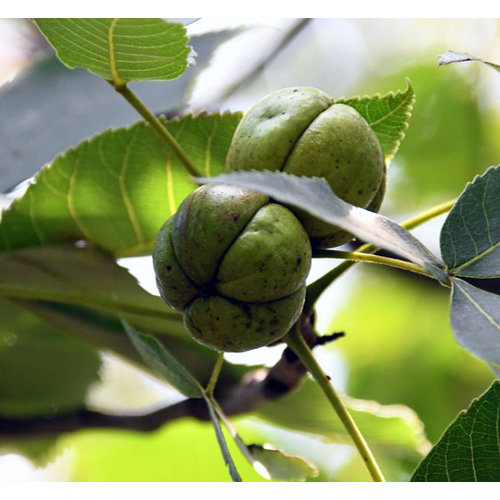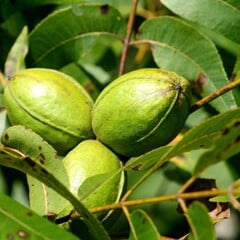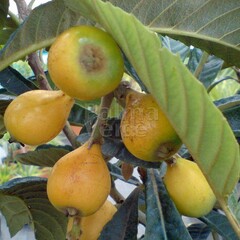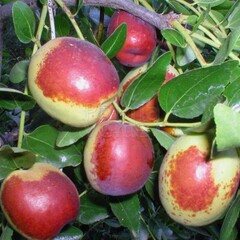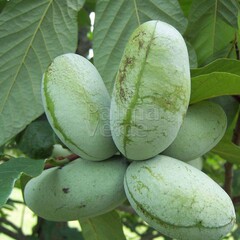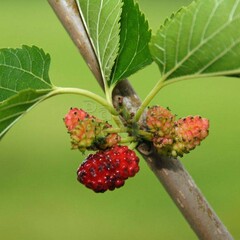Carya ovata or Shagbark hickory is native to Northeastern America and Southeastern Canada.
Trees can grow up to 20-25 meters high and 15 meters wide and more than 350 years old.
The crown grows pyramidal and half open with drooping branches.
The bark of the bark hangs vertically on the trunk in strips which is a beautiful sight. The wood is very hard and is used for many purposes.
The leaf is composed of 5 to 9 lanceolate dividing leaves that are fresh green in color.
In autumn, the Carya ovata changes very nicely to a flaming golden yellow.
Further to winter she loses all her leaves.
The Carya ovata gets delicious edible nuts that resemble the pecan in shape and growth.
The fruits can be harvested in October to November. The nuts taste deliciously sweet. Plants give their first notes from the age of three to four.
The nuts appear in bunches on the tree and the skin is colored brown / red. If the skin bursts, the nuts are visible and ripe for picking.
The nuts can be eaten raw, but can also be roasted.
The deliciously sweet nut flavor is widely used as a garnish in desserts and on ice.
As a location, the Shagbark hickory prefers a moist soil than a dry one, so if planted on poor dry soil, you can give the plant extra water in the summer. A sunny place is also ideal for the Carya ovata.
If the plant grows tall, it can be pruned in early March. It is very hardy and temperatures below -20ºC are no problem.
Winter hardiness zone 6a (-20ºC).





